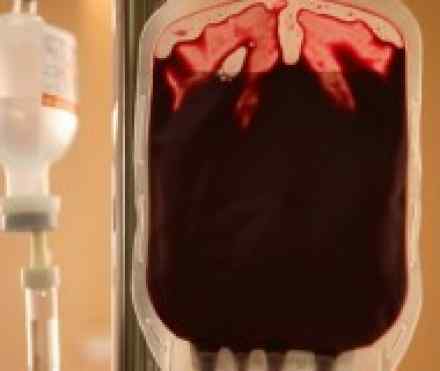
What is it?
Iron deficiency anaemia is a common type of anaemia — a condition in which blood lacks adequate healthy red blood cells. Red blood cells carry oxygen to the body's tissues, giving your body energy and your skin a healthy colour.
As the name implies, iron deficiency anemia is due to insufficient iron. Without enough iron, your body can't produce enough haemoglobin, a substance in red blood cells that enables them to carry oxygen. As a result, iron deficiency anaemia may leave you tired, weak and pale.
You can usually correct iron deficiency anemia with iron supplementation. Sometimes, additional treatments for iron deficiency anaemia are necessary, especially if you're bleeding internally.
Symptoms
Initially, iron deficiency anemia can be so mild that it goes unnoticed. But as the body becomes more deficient in iron and anaemia worsens, the signs and symptoms intensify.
Iron deficiency anemia symptoms may include:
- Extreme fatigue
- Pale skin
- Weakness
- Shortness of breath
- Headache
- Dizziness or lightheadedness
- Cold hands and feet
- Irritability
- Inflammation or soreness of your tongue
- Increased likelihood of infections
- Brittle nails
- Irregular heartbeat (arrhythmia)
- Unusual cravings for non-nutritive substances, such as ice, dirt or pure starch
- Poor appetite, especially in infants and children with iron deficiency anaemia
- Restless legs syndrome — an uncomfortable tingling or crawling feeling in your legs
Causes
Normally, your body uses iron from the food you eat or recycled iron from old red blood cells to produce haemoglobin. Haemoglobin is the part of red blood cells that gives blood its red color and enables the red blood cells to carry oxygenated blood throughout your body.
If you aren't consuming enough iron, or if you're losing too much iron, your body can't produce enough hemoglobin, and iron deficiency anemia will eventually develop.
Common reasons that iron deficiency anemia develops include:
- Blood loss. Blood loss is the most common cause of iron deficiency anemia in Europe. The reason is that blood contains iron within red blood cells. So if you lose blood, you lose some iron. Women with heavy periods are at risk of iron deficiency anaemia because they lose a lot of blood during menstruation. Slow, chronic blood loss within the body — such as from a peptic ulcer, a kidney or bladder tumour, a colon polyp, colorectal cancer, or uterine fibroids — can cause iron deficiency anaemia. Gastrointestinal bleeding can result from regular use of aspirin or other nonsteroidal anti-inflammatory drugs (NSAIDs). Tell your doctor if you notice blood in your urine or stools.
- A lack of iron in your diet. Your body regularly gets iron from the foods you eat. If you consume too little iron, over time your body can become iron deficient. Examples of iron-rich foods include meat, eggs, dairy products or iron-fortified foods. For proper growth and development, infants and children need iron from their diet, too.
- An inability to absorb iron. Iron from food is absorbed into your bloodstream in your small intestine. An intestinal disorder, such as Crohn's disease or celiac disease, which affects your intestine's ability to absorb nutrients from digested food, can lead to iron deficiency anaemia. If part of your small intestine has been bypassed or removed surgically, that may affect your ability to absorb iron and other nutrients. Some medications can interfere with iron absorption. For example, regular use of medications that decrease stomach acid may lead to iron deficiency anaemia. Your body needs stomach acid, which these products suppress, to convert dietary iron into a form that can readily be absorbed by the small intestine.
- Pregnancy. Without iron supplementation, iron deficiency anemia occurs in many pregnant women because their iron stores need to serve their own increased blood volume as well as be a source of haemoglobin for the growing foetus. A foetus needs iron to develop red blood cells, blood vessels and muscle.
Risk factors
These factors may increase the risk of iron deficiency anaemia:
- Heavy menstrual periods
- Pregnancy
- A diet consistently low in iron
- A known or hidden source of bleeding within your body, such as an ulcer, a bleeding tumour, a uterine fibroid, a colon polyp, colorectal cancer or gastrointestinal bleeding.
These groups of people may be at higher risk:
- Women. Because women lose blood during menstruation, women in general are at greater risk of iron deficiency anaemia.
- Infants and children. Infants, especially those who were low birth weight or born prematurely, who don't get enough iron from breast milk or formula may be at risk of iron deficiency. Children need extra iron during growth spurts, because iron is important for muscle development. If your child isn't eating a healthy, varied diet, he or she may be at risk of anaemia.
- Vegetarians. Because vegetarians don't eat meat, they're at greater risk of iron deficiency anemia. Iron that comes from grains and vegetables isn't absorbed by the body as well as is iron that comes from meat.
In healthy men and postmenopausal women, iron deficiency usually indicates bleeding somewhere in the gastrointestinal tract.
Donating blood — a source of blood loss — isn't a common risk factor for iron deficiency anemia unless you've given blood repeatedly over a short time. However, some people first learn their hemoglobin is low, which indicates anemia, when they offer to donate blood. Low hemoglobin may be a temporary problem remedied by eating more iron-rich foods. It may also be a warning sign of blood loss in your body. If you're told that you can't donate blood because of low haemoglobin, ask your doctor whether you should be concerned.
Complications
Mild iron deficiency anaemia usually doesn't cause complications. However, left untreated, iron deficiency anaemia can become severe and lead to health problems, including the following:
- Heart problems. Iron deficiency anaemia may lead to a rapid or irregular heartbeat. Your heart must pump more blood to compensate for the lack of oxygen carried in your blood when you're anaemic. In people with coronary artery disease — narrowing of the arteries that supply the heart — unchecked anaemia can lead to angina. Angina is chest pain caused by decreased oxygen and blood flow to the heart muscle.
- Problems during pregnancy. In pregnant women, severe iron deficiency anaemia has been linked to premature births and low birth weight babies. But the condition is easily preventable in pregnant women who receive iron supplements as part of their prenatal care.
- Growth problems. In infants and children, severe iron deficiency can lead to anemia as well as delayed growth. Untreated iron deficiency anaemia can cause physical and mental delays in infants and children in areas such as walking and talking. Additionally, iron deficiency anaemia is associated with a greater incidence of lead poisoning and an increased susceptibility to infections.
Diagnosis
Doctors diagnose iron deficiency anemia mainly through blood tests. You doctor will check your blood for:
- Red blood cell size and color. With iron deficiency anaemia, red blood cells are smaller and paler in color than normal.
- Haematocrit. This is the percentage of your blood volume made up by red blood cells. Normal levels are generally between 34.9 and 44.5 percent for adult women and 38.8 to 50 percent for adult men. These values may change depending on your age.
- Haemoglobin. Normal levels of hemoglobin range between 11.1 and 15.0 grams per deciliter (111 to 150 grams per liter), depending on your age, sex and race. A lower than normal hemoglobin level indicates anemia.
- Ferritin. This protein helps store iron in your body, and a low level of ferritin usually indicates a low level of stored iron.
Additional diagnostic tests
If your blood work indicates iron deficiency anaemia, your doctor may order additional tests to identify an underlying cause. If your doctor suspects a source of bleeding within your body, you may need to have your stools tested for traces of blood. Blood in the stools is often an indicator of internal bleeding.
You may need these additional diagnostic tests:
- Endoscopy. Doctors often check for bleeding from a hiatal hernia, bleeding ulcers and stomach bleeding with the aid of endoscopy. In this procedure, a thin, lighted tube equipped with a video camera is passed down your throat to your stomach. This allows your doctor to view your oesophagus — the tube that runs from your mouth to your stomach - and your stomach to look for sources of bleeding.
- Colonoscopy. To rule out lower intestinal sources of bleeding, your doctor may recommend a procedure called colonoscopy. A thin, flexible tube equipped with a video camera is inserted into the rectum and guided to your colon. You're usually sedated during this test. A colonoscopy allows your doctor to view some or all of your colon and rectum to look for internal bleeding.
- Ultrasound. Women may also have a pelvic ultrasound to look for the cause of excess menstrual bleeding, such as uterine fibroids.
Your doctor may order these or other tests after a trial period of treatment with iron supplementation.
References
http://www.irishhealth.com/article.html?con=593
https://www.hse.ie/eng/health/az/A/Anaemia,-iron-deficiency/
http://www.nhs.uk/conditions/Anaemia-iron-deficiency-/Pages/Introduction.aspx
http://www.webmd.com/a-to-z-guides/understanding-anemia-basics


